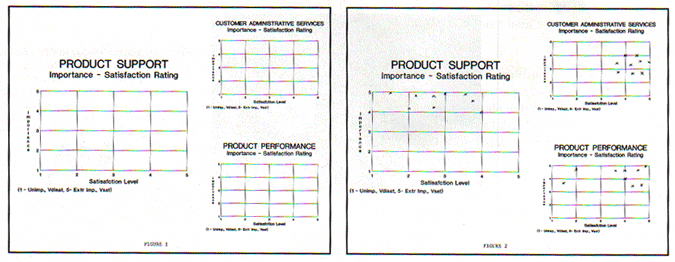Editor's note: John Moran is a principal of J.J. Moran & Associates, a marketing/quality consulting firm located in Westlake Village, Calif.
The voice of the customer needs to become more important in the business-to-business decision process. In the atmosphere of downsizing and process reengineering, companies are being forced to get as much value as possible from every dollar spent on business-to-business research. At the same time, they are being called on to integrate customer requirements to a much greater extent. Focus groups can assume an important role by becoming integrated into the client's decision process.
A focus group-based process can address both of these needs by combining existing marketing and quality tools. Focus groups are an excellent way to capture the voice of the customer. They are a very palatable form of market research that can simultaneously entertain and inform. However the nature of this research tool can make it difficult to relate the qualitative, anecdotal nature of the findings to specific decisions. A structured-process approach can address these shortcomings without compromising the rich, conversational nature of focus groups.

The process
Structured input - A questionnaire or graphic approach such as perceptual mapping or conjoint analysis can be used to structure and capture the mindset of focus group participants prior to the discussion. I typically use a questionnaire early in the session to allow all respondents to gather their thoughts prior to the discussion. This step is particularly helpful for those who may be swayed or drowned out by more aggressive respondents.
For example, Figure 1 shows a mapping questionnaire used to gather respondent importance and satisfaction ratings with three major elements of customer satisfaction. At the beginning of the group, customer support elements (product support, customer administrative services, and product performance) are defined and respondents are asked to plot their satisfaction and the importance of each element to their particular operation.
The discussion - Prior to the discussion, responses can be plotted to present both overall group consensus and outlier responses. The discussion then focuses on the motivations, needs and applications behind respondent choices.
Figure 2 shows the results from the group. Typically, I will plot the feedback for all to see and use the results as a discussion starter. For example, the results show:
- high importance but a wide range in satisfaction for product support;
- administrative services are less important but the group's satisfaction level is both higher and more consistent;
- finally, two members of the group appear to have distinctly different levels of satisfaction with product performance.
I've found the visual feedback to be an important facilitator that adds considerable value to the group discussion.
Implementation - As part of the quality function deployment process, which involves translating the voice of the customer into product design or company support efforts, the data can be used to drive the construction of a preliminary "house of quality" (HOQ), where the emphasis is on specific implementation actions to address customer needs and requirements. The HOQ can form the basis for the moderator's report, a follow up client workshop, or both.
Figure 3 shows a preliminary HOQ where the plotted results of our focus group have been related to specific implementation alternatives under consideration. Even though the focus group results are not conclusive they form an important backdrop to understand the satisfaction/importance data we have collected.
Tying these preliminary results to decision alternatives can be extremely valuable. Although a complete description of the HOQ is beyond the scope of this article, Figure 3 shows how our HOQ not only captures the group's satisfaction and importance scores, it more importantly relates them to four alternative projects under consideration. Our HOQ chart shows the customer training project as a clear first choice for the following reasons:
- The relative importance is the highest (31 percent);
- It also has a strong impact on the most important, least satisfied customer service -product support;
- It is relatively easy to implement (viz., the organizational difficulty score of 3).
Benefits
I have used the above process for a wide range of assignments including both new product development and customer satisfaction. With new product development conjoint analysis can be useful to address the relative attractiveness of specific product design attributes. For customer support and service oriented projects the perceptual mapping approach described above worked best. I've found the front end questionnaire adds to rather than detracts from the discussion. Most participants respond well to the mixture of "hard" and "soft" research approaches and appreciate the time to mull over their position prior to the discussion.
Most important, this process directly addresses a major client requirement, namely the implementation of decisions that will be influenced by the research. The importance of recognizing this element and integrating it into the research design cannot be overstated.
The process can also be helpful in defining and focusing on areas of importance and definition prior to embarking on more expensive quantitative research to address more representative populations or different market segments.
Summary
The focus group process needs to be reengineered to make it more responsive to client needs. We need to take a wider view of our "conversation with the market" and integrate it with other marketing and quality tools. Focus groups should be viewed as an important element in a process designed to add value to the client's decision process.
